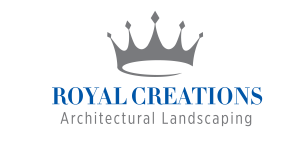
one
two
three


Insect pollinators pollinate roughly two-thirds of the food we eat and around 85% of the flowers in the world. However, insects are struggling in the modern world. Planting a pollinator garden is one way to help them. In addition, butterflies and other pollinators are fun to watch as they flit from plant to plant.
Pollinators need food, water, shelter, and safety. Planting a variety of plants is the best way to meet these needs. Here are some suggestions.

A flower garden full of food for pollinators
Pollinators need three types of food: nectar, pollen, and foliage. Most pollinators have larva that eat foliage to get the energy to grow and reproduce. For example, Monarch butterflies need milkweed in their caterpillar phase. As adults, Monarchs feed on nectar. Some pollinators need both nectar and pollen to eat, such as honeybees.
When picking plants for pollinators, pick a range of sizes and shapes to maximize the pollinators you attract. In addition, plan what you plant so that there will be something in bloom from early spring through to the first frost. Native plants attract the most pollinators and require the least maintenance. We can recommend the perfect native plant for any space.
While some pollinators get all the water they need from their food, others need a source of water. Bees and other insects can drown in deep water, however. Using a shallow saucer with pebbles in it as a bee fountain can prevent drownings. Just remember, in the heat of summer you will have to add water every day or the saucer will dry out.

A Bee Box For Solitary Bees To Nest In
Pollinators need shelter to raise their young and to escape predators. Leaving a corner of earth bare allows ground-dwelling bees and other pollinators to nest there. Leaving plant stalks that are hollow standing after deadheading the flowers allows pollinators to nest in them. Mount bee blocks in your garden to give solitary bees a place to nest. Once a block is used up, you can discard the hollow tubes in early spring after the larvae have left and replace them with new tubes. Trees and shrubs give insects and hummingbirds places to hide from birds and other predators.

A Monarch Caterpillar On Milkweed
The best way to help pollinators in your garden is to use as few pesticides as possible. Pesticides kill beneficial insects as well as pests. Native plants and insects have evolved with one another, and the plants can tolerate a low level of insects feeding on them.
If you must spray, use the least toxic pesticide you can, spray in the late evening when pollinators are not present, and try to avoid spraying the flowers of the plant. Tolerating a low level of caterpillar damage is necessary to have butterflies. For example, the caterpillars of the Black-Winged Swallowtail Butterfly eat dill, fennel, and related plants. Plant enough to share if you want the butterflies around.
If you are interested in attracting more pollinators, Royal Creations Architectural Landscaping can work with you to pick annuals and perennials that pollinators like that will thrive in the space you have. Your yard will look bright and attractive to you and the area pollinators. Give us a call or schedule a consultation to learn more.